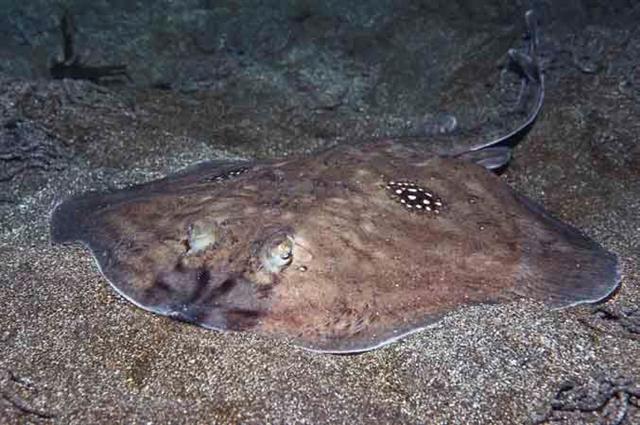| Rajidae (Skates) |
| 81 cm TL (male/unsexed); 68 cm TL (female) |
|
demersal; marine; depth range 12 - 900 m |
| Eastern Atlantic: Kattegat (Ref. 3167) and North Sea, around Great Britain, Ireland and the Mediterranean to Morocco and Senegal. |
|
Dorsal spines (total): 0-0; Anal spines: 0-0; Anal soft rays: 0-0. Snout short; upper surface entirely spinulose, but centre of pectoral fins more or less bare in adults, underside smooth except for prickly front edges; generally 9-13 thorns in a complete row around inner margin of eye, and a large triangle of thorns on nape or shoulder region; two parallel rows of strong thorns on each side of midline along tail; upper surface ochre to light greyish-brown with a large roundish black eye-spot in middle of each pectoral fin, underside white (Ref. 3167) |
| Feed on all kinds of bottom animals (Ref. 3167). Oviparous. Distinct pairing with embrace. Young may tend to follow large objects, such as their mother (Ref. 205). Eggs are oblong capsules with stiff pointed horns at the corners deposited in sandy or muddy flats (Ref. 205). Egg capsules are 5.0-7.0 cm long and 3.1-3.9 cm wide (Ref. 41250). Around 70-150 eggs are laid per individual annually (Ref. 41250). |
|
Least Concern (LC); Date assessed: 25 November 2014 Ref. (130435)
|
| harmless |
Source and more info: www.fishbase.org. For personal, classroom, and other internal use only. Not for publication.

